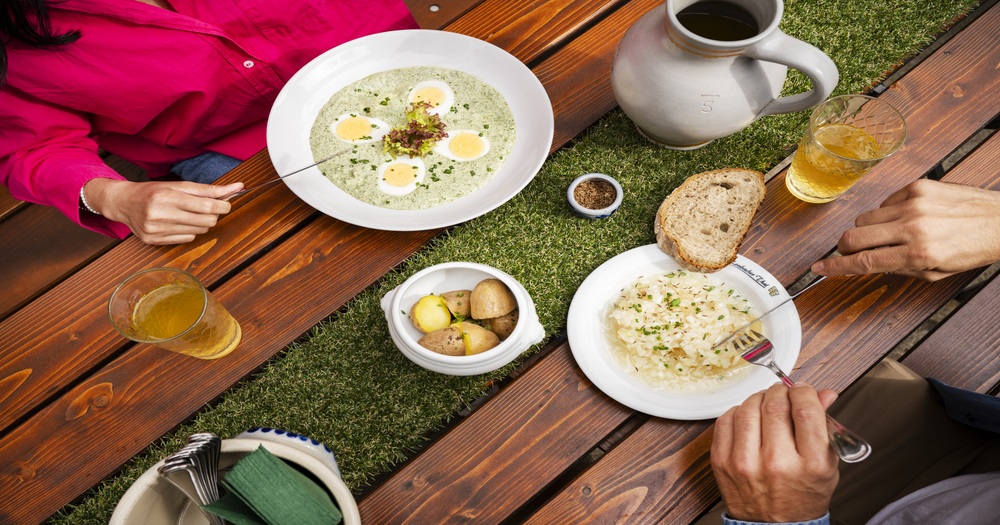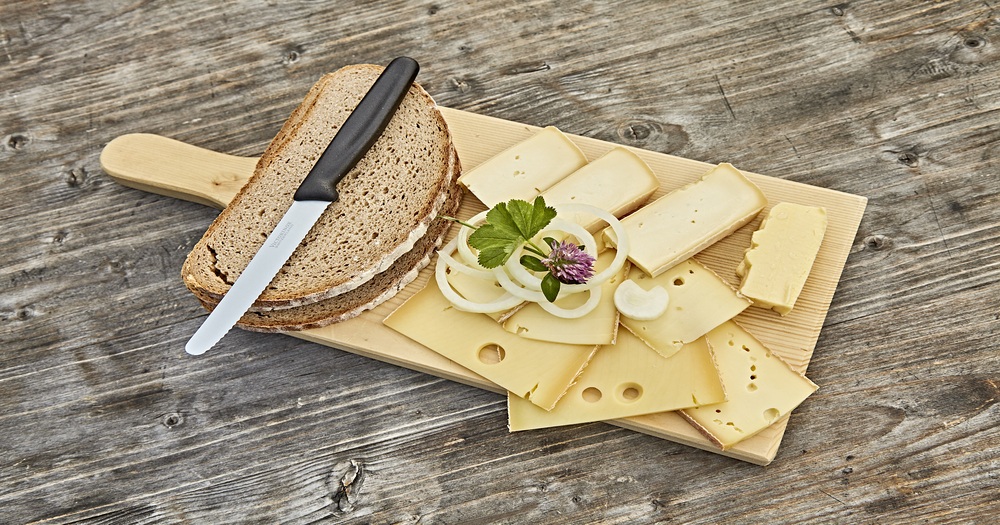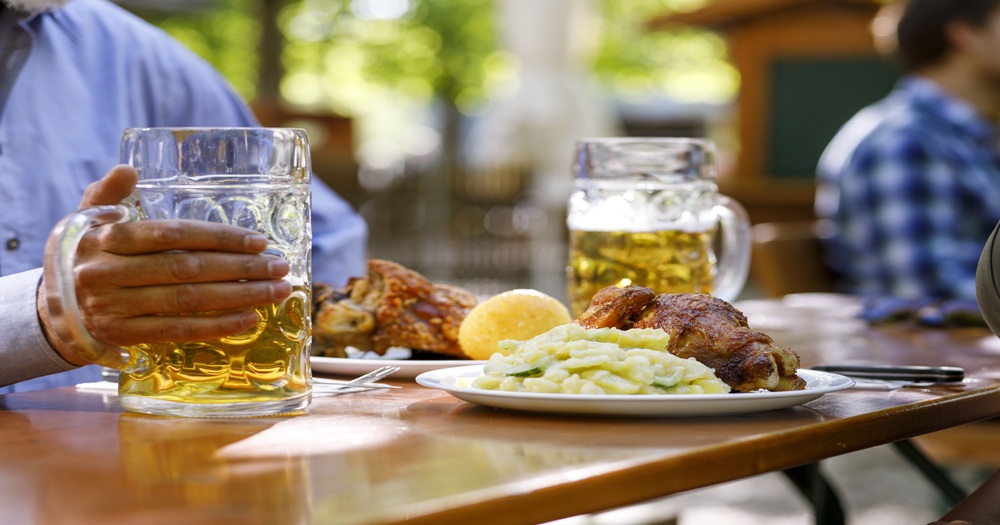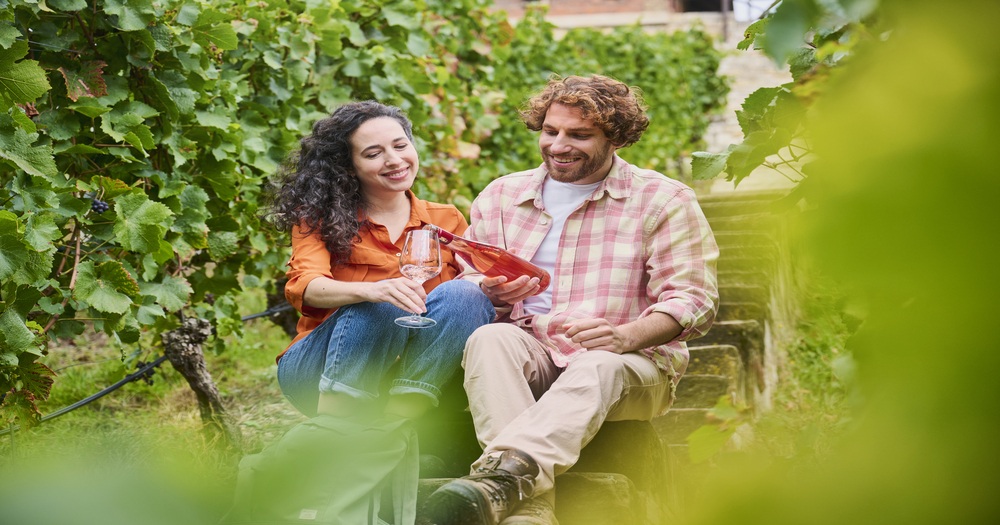Discover Germany’s edible delights
With over 3,000 types of bread, a proud beer culture, a rich winemaking tradition, and beloved regional dishes, Germany’s rich culinary heritage is shaped by history and flavor.
Germany on a plate: savor regional flavors
In Germany, food is a way of life deeply rooted in heritage and shaped by local character. On the northern coast, herring and shrimp reflect the maritime spirit. The west is known for hearty favorites such as Himmel un Ääd and the herb-packed Frankfurter Grüne Soße. In the east, sweets like Dresdner Eierschecke bring a touch of elegance. In the south, the classic Weißwurst, Maultaschen und Spätzle are served with pride and warmth. Let your appetite lead the way!
If you’re curious to explore even more, discover delicious regional recipes!

Brotzeit: more than just bread
Brotzeit (“bread time”), also known as Abendbrot (“evening bread”), is a beloved tradition across Germany. With over 3,000 varieties of bread ranging from hearty rye loaves such as Westphalian pumpernickel, crusty Bauernbrot from the Hunsrück region, to festive specialties like Dresdner Christstollen, bread in Germany isn’t just a staple, it’s a cultural icon. Typically enjoyed with cold cuts, regional cheeses, pickled vegetables or fresh radishes, Brotzeit offers a moment of comfort and connection. Depending on the season, it might be enjoyed in a Bavarian beer garden, where the tradition of bringing your own food is part of the charm and a draft beer completes the experience.

Beer, craft, and culture: Germany’s beer tradition
Beer is one of Germany’s most cherished traditions, enjoyed in countless styles across the country. From Bamberg’s smoky Rauchbier to Cologne’s crisp Kölsch, each region has its own brewing identity. Bavaria is known for refreshing Helles and fruity Weißbier, while northern Germany favors the hoppy pilsner. Germany’s craft beer scene is flourishing, with small independent breweries across the country experimenting with bold flavors, unique ingredients, and creative twists on classic styles. Whether brewed from centuries-old recipes or modern innovations, beer in Germany reflects local pride and craftsmanship and is an important part of everyday life.

From Vine to Village: Discover Germany’s Wine Regions
Germany’s wine culture reflects centuries of tradition and remarkable regional diversity. In Rheinhessen, riesling and silvaner flourish in varied soils, while the Pfalz is renowned for Weißburgunder and chardonnay along its historic wine route. Baden’s warm slopes favor Grauburgunder, and the Mosel’s steep slate vineyards give riesling its distinctive mineral character. Franconia charms with its Bacchus wines and the distinctive Bocksbeutel bottle, a hallmark of its winemaking heritage. Germany’s wine culture blends tradition with nature: scenic wine trails such as the RheinTerrassenWeg invite hikers to explore vineyards, enjoy regional wines, and discover charming landscapes and villages along the way.
